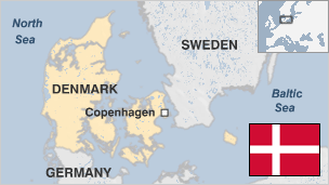
Facts and stats about Denmark
Denmark is one of the countries in Northern Europe bordered by Germany by land and Sweden and Norway by sea. The country has autonomous island territories, namely, Faroe Islands and Greenland.
Denmark is a democracy, with a constitutional monarchy. The current head of state is Queen Margrethe II, although power lies in the Prime Minister (currently Helle Thorning-Schmidt). The government of the country is nearly similar with that of other constitutional monarchies, especially that of Sweden and the United Kingdom.
Centuries ago, Denmark was home to the seafaring Vikings. The Danes were, for a long time, dominant seafarers, and they were famous for their explorations and discoveries. The Danes were also key players struggling to gain monopoly of control in the Baltic.
In the 18th century, Denmark maintained a policy of neutrality. It refused to take part and take sides in any conflict between and among its neighbors. When the World War I started, Denmark never took sides, and the war ended with the country unscathed. However, in the Second World War, Denmark was invaded by Germany. The Blitzkrieg strategy used by the latter proved too much for the small country, and the Danish defences shattered with relative ease. During the course of the war, a Danish resistance was formed, and continued to fight against the superior German forces until Germany capitulated in 1945. Today Denmark is an active UN and NATO member with a small yet well-armed military – abandoning its nearly two-century-long policy of neutrality.
Denmark is one of the most progressive countries in the world, and has constantly ranked as the happiest country in the world according to the Happy People Index. It also is the world’s top performer in terms of social mobility with an impressively high level of social equality.
- Agriculture 148
- Background 9
- Conflict 9
- Cost of living 55
- Crime 139
- Culture 32
- Disasters 30
- Economy 2966
- Education 477
- Energy 1444
- Environment 265
- Geography 91
- Government 240
- Health 333
5.56 million
Population. Ranked 111th in 2013.
$56,210.23
GDP per capita. Ranked 6th in 2012.

42,430 sq km
Sq. km. Ranked 125th in 2008.
The government of Denmark made public a second growth package in two years which is aimed at pulling out Scandinavia’s most fragile economy from economic depression. The finance ministry said this plan is expected to lift up Denmark’s productivity by $1.1 billion, build up the business climate and boost employment. The nation’s economy exerted great effort to emerge from housing problems in 2008 which set off a local banking disaster. Real estate prices crashed in 2013 by 20 percent destabilizing consumer demand and buoyancy. However, national economists predict a growth rate of 1.5 percent in 2014.
This stimulus package will target a maximum of $1.52 billion in annual corporate investments until 2020. This will include almost $900,000 in reduced power fees for enterprises and $98,000 tax break for start-up investments. The government will also reduce dividend taxes for unlisted corporations from 22 to 15 percent. Prime Minister Helle Thorning-Schmidt and Economy Minister Margarethe Vestager said the plan makes it more appealing for private firms to maintain production in the country and protect jobs at industrial sites located outside city hubs. Hopefully, these initiatives will allow the government to raise Denmark’s gross domestic product by $3 billion within the next 10 years. Last year, the coalition government pledged to boost the yearly growth rate to two percent on the average from 2014 up to 2020.
Denmark is the third biggest oil producer in Western Europe, next to Norway and the United Kingdom. Oil and gas production contributed to Denmark’s balance of payments surplus since the start of the 1990s. The country’s energy production is based primarily on imported coal, oil and natural gas from the Danish sector of the North Sea and wind energy. The oil and gas are distributed and exported through pipelines. Gas is exported to Sweden and Germany while surplus oil is sold in the spot market.
jaacosta47 13 May 2014